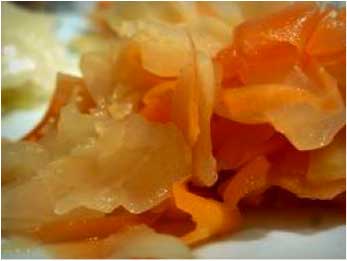Hidden Allergens Abound in Supplements & Medication
 Monday, September 24, 2012 at 7:43PM
Monday, September 24, 2012 at 7:43PM  Elisabeth Veltman, The Tender Foodie tagged
Elisabeth Veltman, The Tender Foodie tagged  allergens in supplements and medication,
allergens in supplements and medication,  dairy-free probiotic,
dairy-free probiotic,  food allergies,
food allergies,  gluten cross contamination
gluten cross contamination  Email Article
Email Article  Print Article in
Print Article in  Food Allergy Processing,
Food Allergy Processing,  Health,
Health,  Nutrition Tip
Nutrition Tip 
updated 9/30/2013
Your doctor tells you to get a digestive enzyme, vitamin/mineral or a probiotic at your local health food store. You pick one up, take it and have an allergic reaction. Oddly, many supplements, even digestive enzymes are made or processed with top allergens like wheat, soy or dairy (even egg and yeast). Corn syrup is another highly allergic substance that is in many cough syrups and other medications. Corn can also be processed with wheat, so those with celiac and gluten allergies need to be aware of this. Even supplement companies that label their products as “free” of the top allergens may not be taking proper precautions during processing. Trace amounts can affect you, especially if you are highly sensitive / allergic to a food or have celiac disease.
Those of us who need supplementation to combat malabsorption need to be especially careful. For me personally, supplementation has been one of the most difficult areas of cross-contamination to uncover.
Take these steps to help uncover hidden allergens that may affect you:
- Ask your doctor if the supplement contains your allergens. Make sure you have a complete list of allergens and that you review it with your doctor EVERY time your physician prescribes something for you.
- Review the ingredient list on the bottle yourself. Look for trigger words like "starch" which can be derived from corn and rice (which could be cross-contaminated with gluten), wheat (contains gluten) as well as gluten-free items like potato, tapioca.
- Before you purchase, call the company to see if the supplement was processed with your particular allergen(s).
- If a medication, have the pharmacist keep a list of your allergens on file and review it with them prior to ordering the prescription.
- If the medication is new, ask the pharmacist to get a statement from the medication company that none of your allergens are processed in their facility.
- Contact your doctor if your research shows that the supplement or medication may contain an allergen on your list and ask your doctor to work with you to find something that will work for you.
- Even medical grade supplements can pose a problem. If you have a reaction to a particular supplement, contact your doctor immediately to let them know. The only way to help solve this problem is by partnering with your prescribing physician, communicating through them how medications and supplements are affecting you, and finding dedicatrd facilities.
There are supplement companies who produce their supplements in a dedicated facility. Klaire Labs, for instance, is a dedicated dairy-free & gluten-free facility and one of the only places that I’ve found to get a dairy-free probiotic, and supplements that consistently work safely. Their probiotics are very pricey, but their other supplements are quite reasonable and effective.
OTHER RESOURCES
Also, here is a fantastic article from a pharmacist that breaks down the different ingredients in medicatons that could affect people who are allergic to gluten and who have celiac disease. it also breaks down some of the fillers, what they are made of and why, including other allergens like corn, soy, tapioca, and dairy, as well as substances that are derived from tar and chemicals. The one thing this article does not address is the cross contamination of normally considered gluten-free items like corn and rice. Sometimes these grains can be processed with gluten-based grains, and there are people who are allergic / sensitive to them.
I've been hearing rumors of studies that have been done on the amount of gluten in specific supplements, but I have not found links to these studies yet, nor studies on other allergens in medication. We'll post when we do, and if you find any, please share them with The Tender Foodie - I'll check them out and give a shout out to the community if they are viable.






